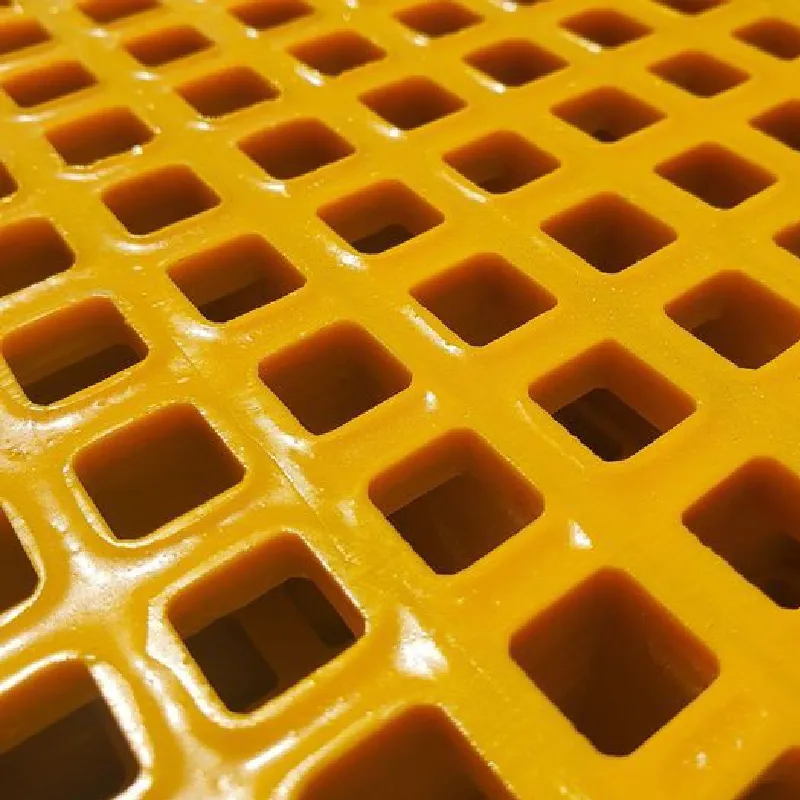loading...
- No. 9, Xingyuan South Street, Dongwaihuan Road, Zaoqiang County, Hengshui, Hebei, China
- admin@zjcomposites.com
- +86 15097380338
- Welcome to visit our website!
glass fiber reinforced polymer gfrp rebar
Understanding Glass Fiber Reinforced Polymer (GFRP) Rebar
Glass Fiber Reinforced Polymer (GFRP) rebar is an innovative material that has transformed the construction industry by providing a corrosion-resistant alternative to traditional steel reinforcement bars. Composed of glass fibers embedded in a polymer matrix, GFRP rebar offers a range of advantages that make it increasingly popular in various civil engineering applications.
One of the most significant benefits of GFRP rebar is its exceptional corrosion resistance. Unlike steel, which is susceptible to rust and degradation when exposed to harsh environments, GFRP's unique composition allows it to withstand moisture, chemicals, and extreme temperatures. This property is particularly advantageous in coastal regions or areas where de-icing salts are used, significantly extending the lifespan of structures such as bridges, tunnels, and parking garages.
Understanding Glass Fiber Reinforced Polymer (GFRP) Rebar
Another key advantage of GFRP rebar is its high tensile strength. While GFRP may have lower compressive strength than steel, it excels in tensile applications, which is crucial for reinforced concrete structures. The specific properties of GFRP can be tailored by adjusting the type and orientation of the glass fibers, enabling engineers to design solutions that meet specific structural requirements.
glass fiber reinforced polymer gfrp rebar

Additionally, GFRP rebar is non-magnetic and non-conductive, making it ideal for specialized applications, such as in electromagnetic sensitive environments or when avoiding potential electrical hazards is necessary. This feature ensures that GFRP-reinforced structures do not interfere with sensitive equipment and remain safe for users.
Despite these advantages, GFRP rebar is not without challenges. The initial cost of GFRP can be higher than that of traditional steel rebar, which may deter some project managers from incorporating it into their designs. However, the long-term savings associated with its durability and reduced maintenance needs often outweigh the initial investment, leading to an overall cost-effective solution.
In terms of environmental considerations, GFRP can be considered a more sustainable option. Its production typically results in lower carbon emissions compared to steel manufacturing, and its lifespan mitigates the need for frequent replacements, reducing waste.
In conclusion, Glass Fiber Reinforced Polymer rebar represents a significant advancement in construction materials. Its corrosion resistance, lightweight nature, high tensile strength, and non-conductive properties make it a valuable alternative to traditional steel reinforcement. As the construction industry continues to seek innovative and sustainable solutions, GFRP rebar is set to play a vital role in the future of infrastructure development, promising enhanced longevity and reduced maintenance for critical structures.
-
Transform Your Spaces with FRP Grating SolutionsNewsNov.04,2024
-
The Versatility and Strength of FRP RodsNewsNov.04,2024
-
The Excellence of Fiberglass Water TanksNewsNov.04,2024
-
The Benefits of FRP Grating for Your ProjectsNewsNov.04,2024
-
Elevate Your Efficiency with FRP Pressure VesselsNewsNov.04,2024
-
Welcome to the World of FRP Pressure VesselsNewsOct.12,2024
-
Unveiling the Future of Filtration: Why FRP Filter Vessels are a Game ChangerNewsOct.12,2024
